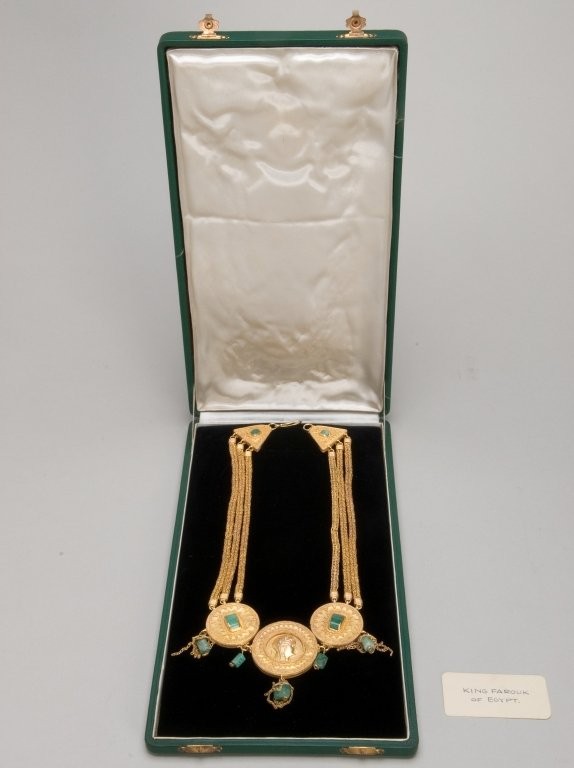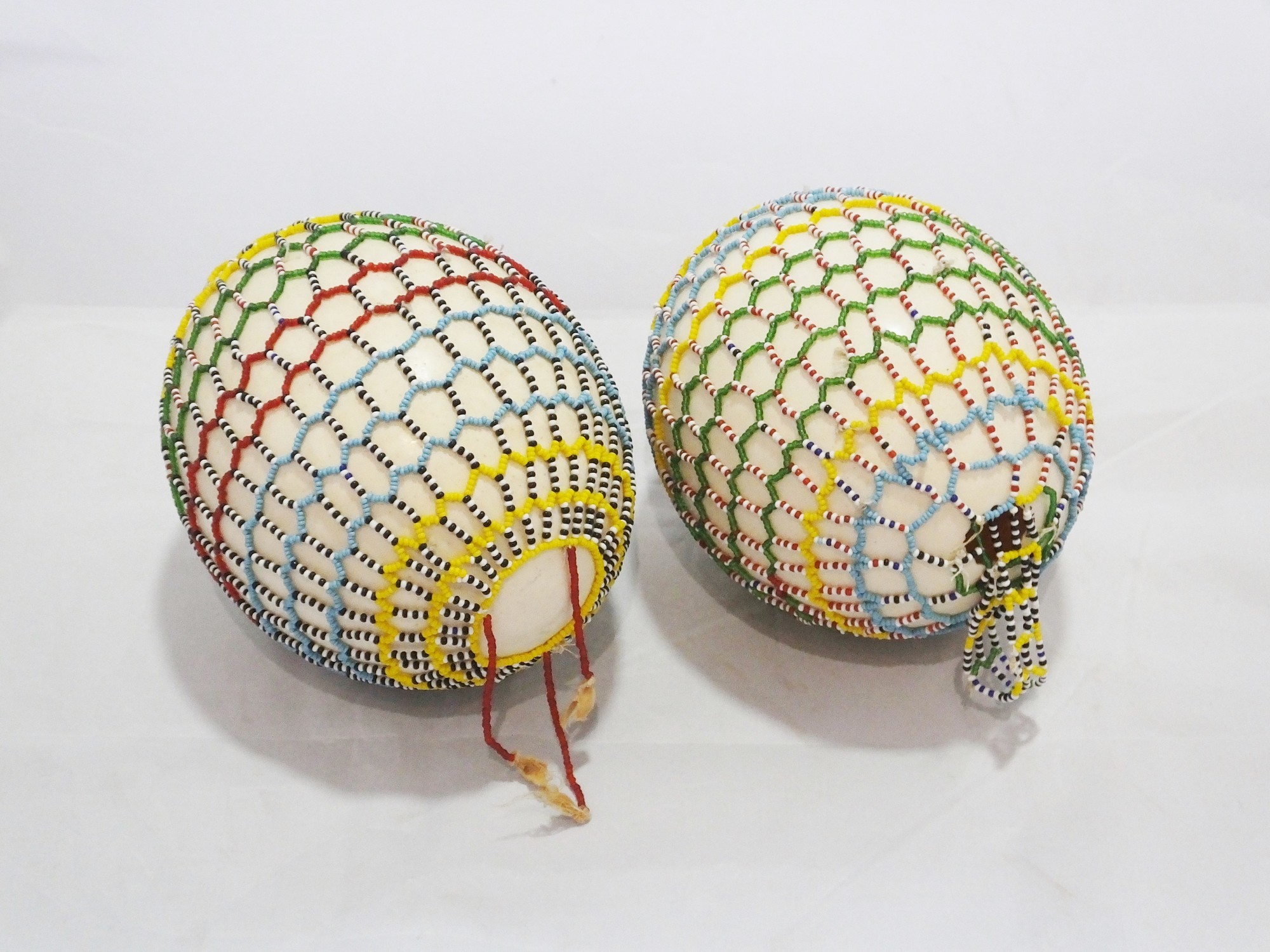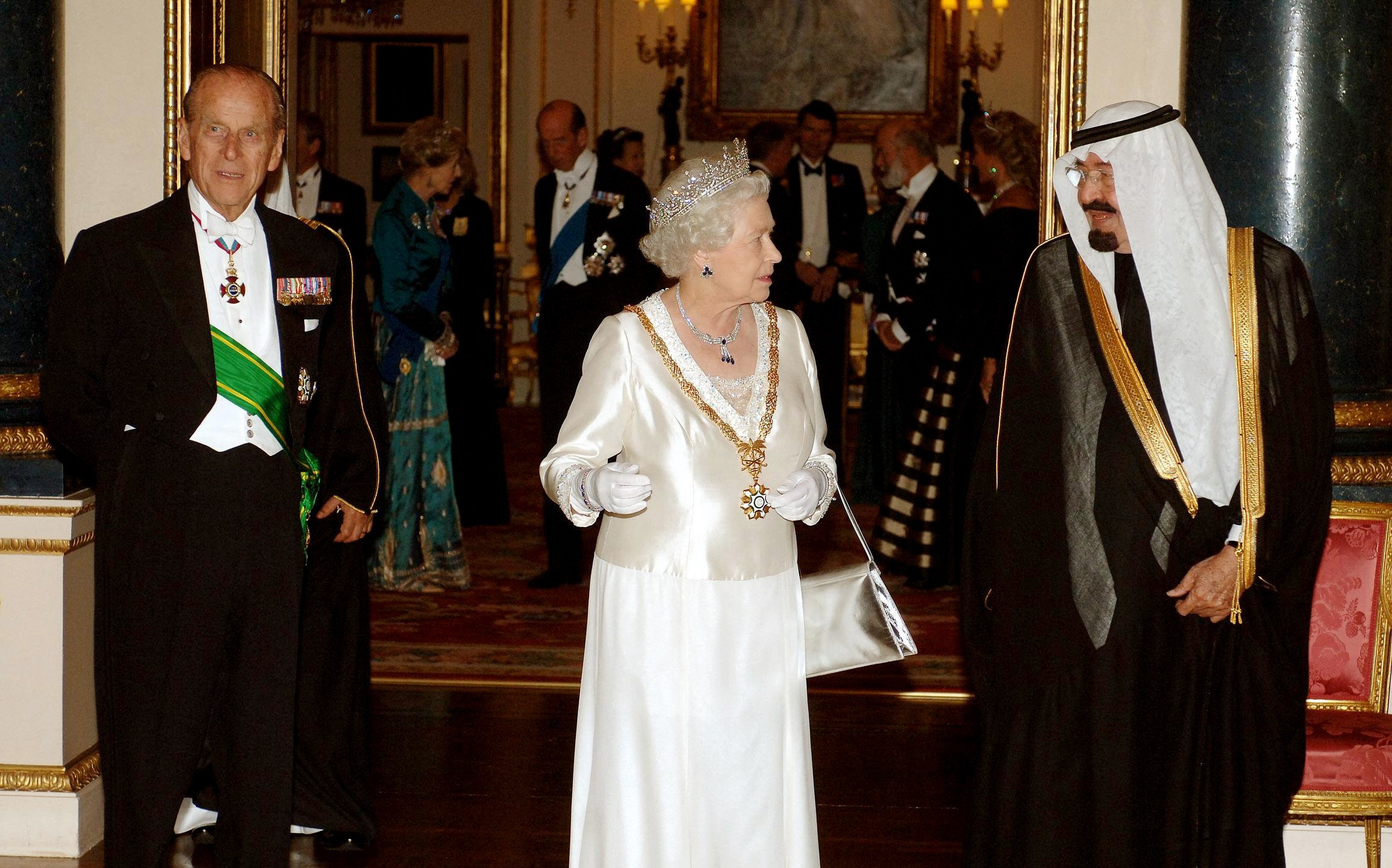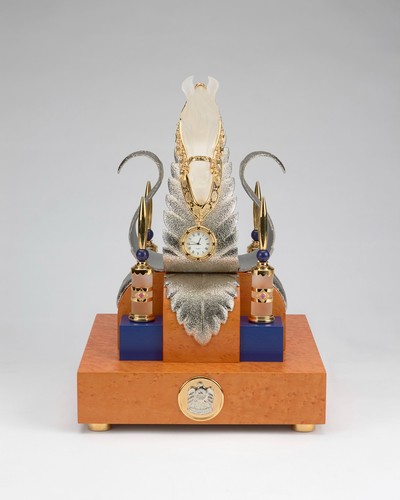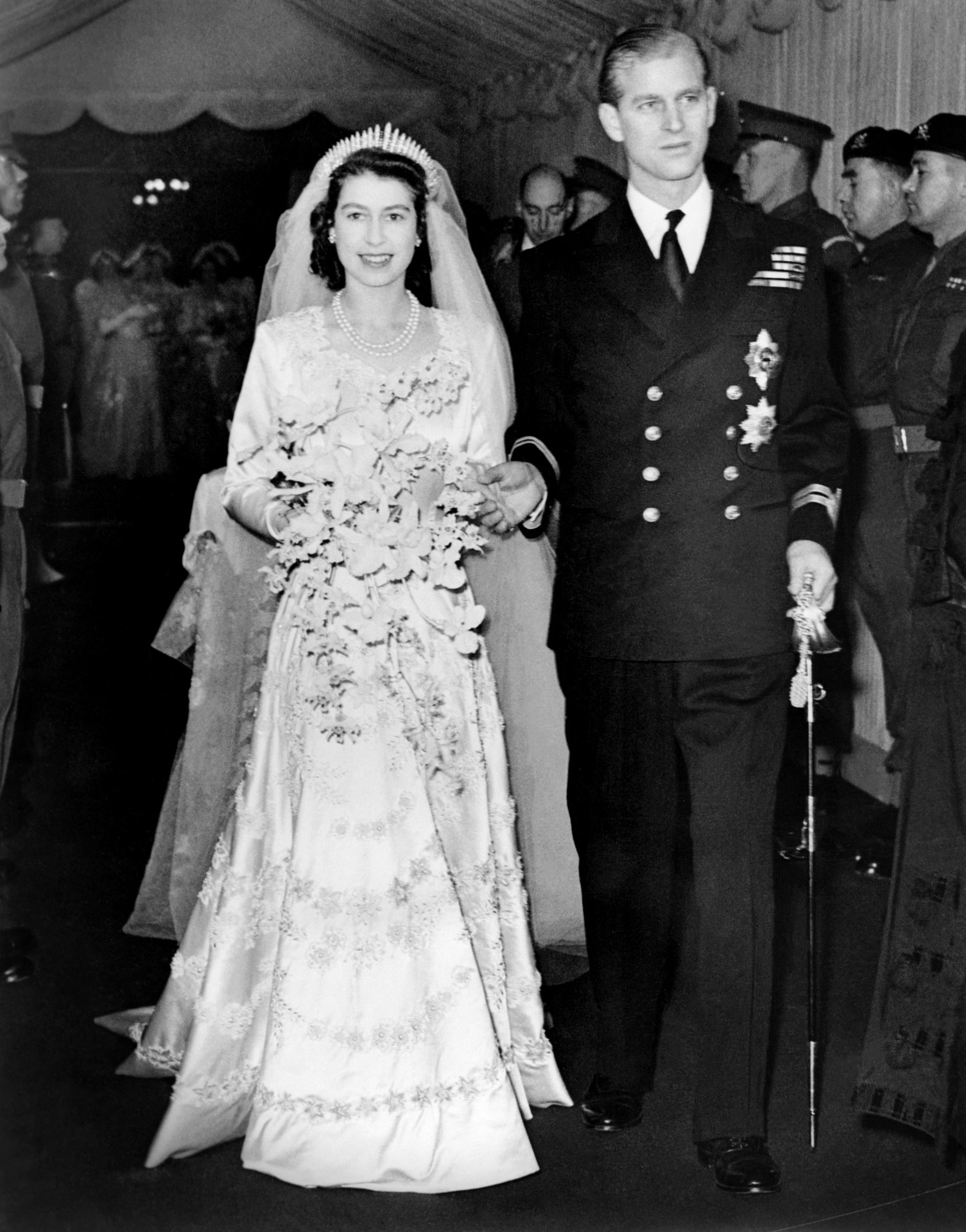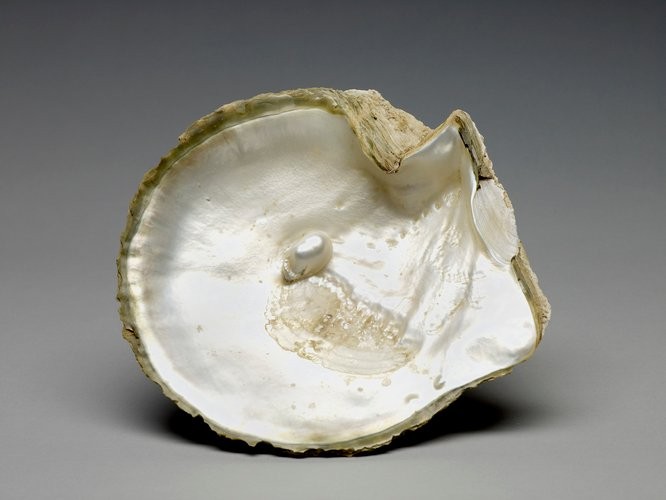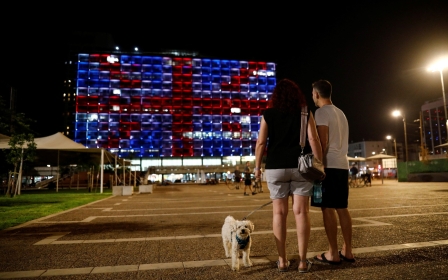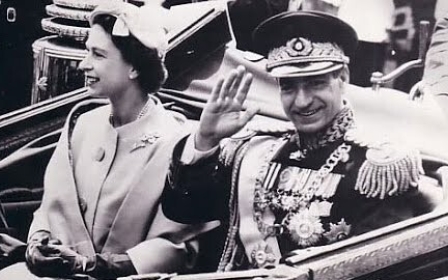Diamonds, ostrich eggs and Arab stallions: The Queen’s eclectic gifts from the Middle East

Queen Elizabeth II is widely considered to be the most well travelled head of state in history - and her collection of gifts from around the world shows it.
Across seven decades of rule, the queen, who died on Thursday at the age of 96, has received a wide array of expensive and historically significant presents.
Among the many donors of objects and jewels to the late monarch are leaders from across the Middle East.
Some of those gift-givers went on to be executed, exiled, deposed in military coups or turned into international pariahs. But not before they added to one of the vastest collections of precious freebies.
From necklaces with 300 diamonds, to photographs of Palestine, oyster shells and ostrich eggs, we take a look at memorable gifts received by the Queen from the Middle East.
New MEE newsletter: Jerusalem Dispatch
Sign up to get the latest insights and analysis on Israel-Palestine, alongside Turkey Unpacked and other MEE newsletters
Egypt: Ancient gold necklace
In 1947, then Princess Elizabeth was presented with a remarkable wedding gift by King Farouk of Egypt.
He gave her a gold necklace dating back to the third century BCE which incorporated one of the earliest Egyptian coins. The ancient mint represents Arsinoe, a former Queen of Egypt during the three-centuries long Ptolemaic Dynasty which ended with Cleopatra.
Like the coin, the gold setting and chains are also from around 250 BCE.
At the time of the gifting, Egypt was under British occupation, as it had been since 1882.
King Farouk was toppled and forced into exile following the Egyptian revolution of 1952, which set in motion the establishment of an Egyptian republic and the end of British rule.
Sudan: Ostrich egg
During the queen’s sole state visit to Sudan in 1965, she was given two ostrich eggs.
The gift, presented by the Supreme Council of Sudan, was enclosed in a trellis of red, yellow, blue and green glass beads.
During the same trip, she was also given a rectangular silver filigree box decorated with a secretary bird and a cotton plant bud.
The queen’s visit in February 1965 came nine years after the African country gained independence from British colonial rule.
More than 500,000 residents of towns near Khartoum and Omdurman lined the streets, according to authorities, waving flags and placards.
Saudi Arabia: Diamond necklaces
The Queen has met five successive kings of Saudi Arabia: Faisal, Khalid, Fahd, Abdullah and Salman.
In May 1967, King Faisal travelled to the UK for a state visit, bringing with him a lavish diamond necklace made in the 1950s by American jeweller Harry Winston.
The piece consists of over 300 diamonds, including baguettes, brilliants and pear-shaped pendant stones, with a combined weight of over 80 carats.
During her only state visit to the Gulf kingdom in 1979, Faisal’s successor King Khalid gifted her another diamond necklace which has since been named after him.
The King Khalid necklace - which features 20 pear-shaped diamond pendants - was frequently worn by Princess Diana in the 1980s.
UAE: Solid-gold camel
During her 1979 tour of the Gulf, Elizabeth II stopped off in the United Arab Emirates, which had ceased to be a British colony around a decade earlier.
The queen was gifted diamond and sapphire jewellery during the trip, as well as a solid-gold sculpture of a camel in front of two palm trees with rubies as dates.
In the summer of 2017, Buckingham Palace presented an exhibition of gifts the Queen had received across seven decades.
Among them was an imitation of a quartz horse’s head with a small clock suspended from a metal harness, gifted by the recently deceased former UAE president Khalifa bin Zayed al-Nahyan in 2010.
Syria: Brocade for wedding dress
Brocade is one of the most prestigious and expensive fabrics of Syria’s Damascus, with its inhabitants hand-weaving the cloth using gold, silver and natural silk threads for centuries.
Queen Elizabeth’s famous wedding dress, which features a drawing of two love birds kissing, was woven using Syrian brocade imported from Damascus.
The dress was made in the UK from 200 metres of brocade reportedly sent by then Syrian President Shukri al-Quwatli in 1947.
Syria is one of the few countries in the Middle East that the queen did not officially visit.
She did host current Syrian President Bashar al-Assad at Buckingham Palace in December 2002, nine years before the civil war broke out in his country that would turn him into a pariah.
Iraq: Arab stallion
Elizabeth II is well-known for her love of horses, and as such has been handed equine gifts across the decades.
In 1953, King Faisal II of Iraq presented the queen with an Arab stallion to commemorate her coronation.
Later that year, she would be given another Arab stallion named Alhehal (Crescent Moon) and an Arab mare named Al Masouda (The Lucky One) by the King of Yemen Ahmad bin Yahya.
Faisal, who had met the queen a year earlier, was the third and final monarch of the short-lived Hashemite kingdom of Iraq.
In 1958 he was overthrown during a military coup known as the 14 July Revolution and executed along with several members of his family.
Qatar: Rubies and pearls
During a state visit to the UK in 1985, former Qatari Emir Sheikh Khalifa bin Hamad Al Thani gave the Queen a matching ruby necklace and earrings set.
The set was worn on several grand occasions during the 1990s, including during her speeches at both the 1990 and 1994 state opening of parliament ceremonies.
Elizabeth II was also gifted a large pearl necklace and earrings set during her official visit to Qatar in 1979.
She has since mainly worn it at Qatar-related events, including during a 2010 state banquet for Emir Hamad bin Khalifa Al Thani at Windsor Castle.
During the 1979 visit, she was also presented with an oyster shell with an embryonic large pearl embedded within it.
Pearl diving was a large part of Qatar’s economy during the 19th and early 20th century, employing almost half of its population up until the 1940s.
Iran: Furniture set
During the queen’s 1961 visit to Iran, Shah Mohammad Reza Pahlavi gifted her an entire suite of furniture.
It included an armchair with an intricate sadeli geometric pattern, a kneehole-desk with a mosaic inlay, an inkstand, two boxes and a screen with a wool tapestry of Elizabeth II.
The queen inadvertently played a role in the 1953 coup which brought the shah to power, according to 2020 documentary The Queen and the Coup.
The film, citing US documents, claims that Pahlavi was considering fleeing Tehran, when a British government message stating "Queen Elizabeth" had expressed concern and "strong hope we can find some means of dissuading him from leaving the country".
Washington passed the message to Pahlavi, who performed a U-turn. But neither the US nor the shah knew the British had actually been referring to the ship the RMS Queen Elizabeth - and the monarch herself had no role whatsoever.
Palestine: Photograph album
To mark their marriage, Princess Elizabeth and Prince Philip were gifted an album containing photographs of views of Palestine taken across the 1930s and 1940s.
The images include aerial views of several significant buildings, including the Dome of the Rock and the ancient crusader outpost in the coastal town of Atlit, near Haifa.
The collection was presented by the General Council of the Jewish Community of Palestine in November 1947, during the British Mandate over the territory.
Just months later, on 15 May 1948, British rule would end in Palestine and the state of Israel would be created. The date is known to Palestinians as the Nakba (catastrophe) - when over 700,000 were displaced from their homes.
Despite visiting more than 120 countries and travelling around a million miles during her 70 years on the throne, it has not gone unnoticed that Elizabeth II never visited Israel.
Reasons given for the apparent snub ranged from a fear of upsetting rich Arab Gulf nations and losing subsequent trade deals, to Israel's violent resistance to the British mandate there as it sought independence.
This article is available in French on Middle East Eye French edition.
Middle East Eye delivers independent and unrivalled coverage and analysis of the Middle East, North Africa and beyond. To learn more about republishing this content and the associated fees, please fill out this form. More about MEE can be found here.


